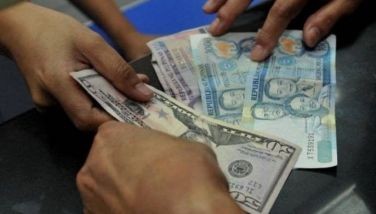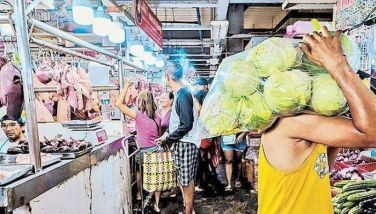Department of Agriculture mulls bigger fisheries budget

MANILA, Philippines - The Department of Agriculture (DA) plans to allocate a hefty P1 billion budget for the fisheries subsector, particularly aquaculture, next year.
The fisheries subsector in the past couple of years has been the major growth driver for the agriculture sector, taking up the slack from the crops subsector which is always affected by weather disturbances.
The subsector, which accounts for 26.63 percent of total agricultural production, posted a growth of 3.28 percent from January to September this year.
Production in aquaculture alone expanded 4.50 percent in the first three quarters of 2009, while that of commercial fisheries went up 3.75 percent.
Municipal fisheries barely managed to post a 0.21percent output increment in 2009.
As part of moves to develop the aquaculture industry, two DA agencies have partnered with a Bangkok-based regional fisheries center in carrying out three aquaculture projects in the Visayas and Mindanao.
The projects of the Southeast Asian Fisheries Development Center (SEAFDEC), which are under the banner of its Aquaculture Department’s Institutional Capacity Development for Sustainable Aquaculture (ICDSA), are being carried out with the support of the DA’s Bureau of Aquatic Resources (BFAR) and National Irrigation Administration (NIA).
They cover the town of Dumarao in Capiz and the provinces of Misamis Occidental and Northern Samar and also involve the local government units of these areas as well as other foreign funding agencies.
According to Dr. Joebert Toledo, director of the SEAFDEC-AQD based in Tigbauan, Iloilo, the Capiz project involves freshwater aquaculture production.
BFAR provided funds for the purchase of construction materials to build fish cages, Toledo said, while NIA provided information regarding the dam construction that affected the rice farms of the beneficiaries.
Toledo explained that in Misamis Occidental, the SEAFDEC-AQD provided technical assistance in improving the production of the province’s aquamarine park multi-species hatchery by extending technologies it had developed on the hatchery and grow-out of grouper, with BFAR monitoring the implementation of the project.
Toledo said that in Northern Samar, SEAFDEC-AQD and BFAR collaborated with local non-governmental organizations (NGOs) in helping small mud crab catchers in four municipalities through the adoption of mud crab production technologies developed from studies funded by the Australian Center for International Agricultural Research (ACIAR).
SEAFDEC-AQD has been carrying out research, technology generation, training and information dissemination on a wide range of aquaculture disciplines, including management of broodstock and seed quality improvement, promotion of responsible and environment-friendly aquaculture, diagnosis and control of aquaculture diseases, aquaculture for stock enhancement and culture of aquatic species under international concerns.
Besides the three aquaculture projects, SEAFDEC-AQD and BFAR are also implementing a fish tagging project designed to let researchers determine the migratory path of small pelagic fishery species, which, in turn, will eventually lead to the development of a regional management plan to ensure the sustainability of marine resources in the region.
The Philippines and seven other Asian countries are involved in tagging five commercially important fish species like galunggong and hasa-hasa in the South China and Andaman Seas.
Besides the Philippines, the other countries taking part in the tagging of mackerel and round scads species are Brunei Darussalam, Cambodia, Thailand, Indonesia, Malaysia (Peninsula, Sabah and Sarawak), Vietnam and Myanmar.
- Latest
- Trending






























